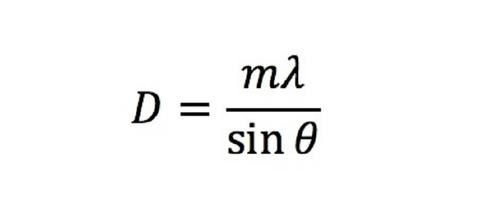Hair is basically an indispensable part of our lives. In fact, it can be found all over our bodies, except for the palms and the soles of our feet, which produce the Dickkopf 2 (DKK2) which can stop Wnt (a small molecular messenger carrying information between cells about the growth of hair). The hair plays a crucial role in protecting us from external factors such as the environment or the temperature. Depending on the hair structures of each, these protective effects can be varied. So, to find out how efficient your hair can be, we have here this article about the width/thickness of human hair and how to measure it. Scroll down to find out the average diameter of a human hair and see if your own lock has reached the standard.
Factors involving the thickness/width of a human hair
Human hair consists of 80% of keratin and roughly 10-15% of water. The other 5-10% are mainly pigments, minerals, and lipids. The very outer layer of our strands is the cuticles, which envelop the core of the hair shaft – the hair cortex – each hair comprises about 20% cuticles and 80% cortex.
Surprising as it might be, the density of our hair depends on what hair color it is. Particularly, the blondes always come first in terms of having the most hairs. The runner-up is the black-haired with an average of 110,000 hairs each and the following are the brunettes with 100,000 hairs and redheads with 80,000 hairs. But that just the numbers, the width of the hair, on the other hand, is a whole different aspect. For example, black-haired people often got their strands thicker than those redheads and vice versa. That’s why we cannot actually place a standard value to human hair’s thickness as the genetic makeup differs from yours to that of the others.
Another factor that drives your hair width is age. Our aging processes greatly influence the keratin and KAP (keratin-associated proteins) expressions in the hair follicles. As we grow up, the strands become thicker and stronger, as they’re in their most well-balanced machinery. Yet, once we passed 25, hair aging symptoms will start appearing as well. Each of us goes through 3 stages of developing hairs. The very first stage is when hairs start to grow and generated. We call it the anagen phase. The anagen phase will last between 2-7 years depending on each individual. The second stage is the catagen phase, which is when follicles stop producing and thus causing the hair to shed. The final stage called the telogen phase. In this phase, hair follicles regenerate and new hair starts to form. This phase often occurs within 3 months or more.
Average thickness/width of a human hair
Human hairs are often measured with a specific measurement unit called micrometer (µm). Normally, a person’s hair can range from 17- 181 µm if left out other factors affecting our hair texture and density. Having said that, this measurement can only be counted as a general observation.
As we have stated, genetic inherit factors play vital roles in deciding the thickness of our tresses. In general, Africa has coarser hair with a diameter of 1/450-1/140 of an inch each strand. While in Europe, hairs are considered thin when 0.04-0.06 mm thick, average when 0.06-0.08mm and thick when having a diameter of 0.08-0.1 mm. Comparing to Europeans and Africans, Asian hair is somewhat the thickest among the three with the typical diameter between 0.08 to 0.12mm.
Methods to measure the thickness/width of a human hair
If you want a simple way to determine how thick your hair is, just observe your roots from different angles. When you look at your scalp, you can get the overall look of your hair density as well as the texture of your lock. Comparing your tress with a thread is another simple way to determine if you have thick hair or not.
For an accurate number, you may want to use the laser pointer to get the width of your strand. This is how you do it:
Use a 6 inches-wide cardboard to make the holding frame for your hair. Cut a small rectangle of 0.4 inches wide and 1.5 inches tall inside it.
Take the hair you want to measure and tape it at the top and bottom of the frame running through the very middle of the rectangle.
In the darkroom, stand 3 feet away from a blank wall and hold up the frame. Use the laser pointer and light it at the wall to get the reflection of the tress.
Measure the distance from your hair to the wall in centimeters (advisable)
Check the light wavelength. Normally, a red laser pointer is about 650 nm, whereas the green one will be about 532. Measure the light scatter on the wall from the center of the dot to the first section where the light can no longer reach. And you’ll get the elements needed to figure out the thickness/width of your hair. Put those numbers in this equation below:
D – the width of the hair
λ – the wavelength of the laser beam
θ = s ÷ D – the angle with the straight-through position made by the minima
s – the distance from the center of the principal maximum to the first minimum
a – the distance from the slit to the screen
m – the minimum distance measured on the scatter
For instance,
- Distance between hair and laser and wall: a = 185 cm
- Laser wavelength: λ = 0.000065cm
- Ave light scatter of the hairs: s = 2.2 cm
- The minimum distance measured on the scatter: m=1cm
D = 0.005462 (cm)
If your hair lies between 17-181 µm, then your hair’s in the safe zone. In that case, make sure to keep caring for your hair to maintain a healthy lock.
Now that we’ve provided you the methods and how to measure the thickness/width of a human hair, it’s time you tried it yourself. Make sure to share your stories in the comment below and follow APOHAIR’s WEBSITE for the latest updates about our products and other discounts.




















